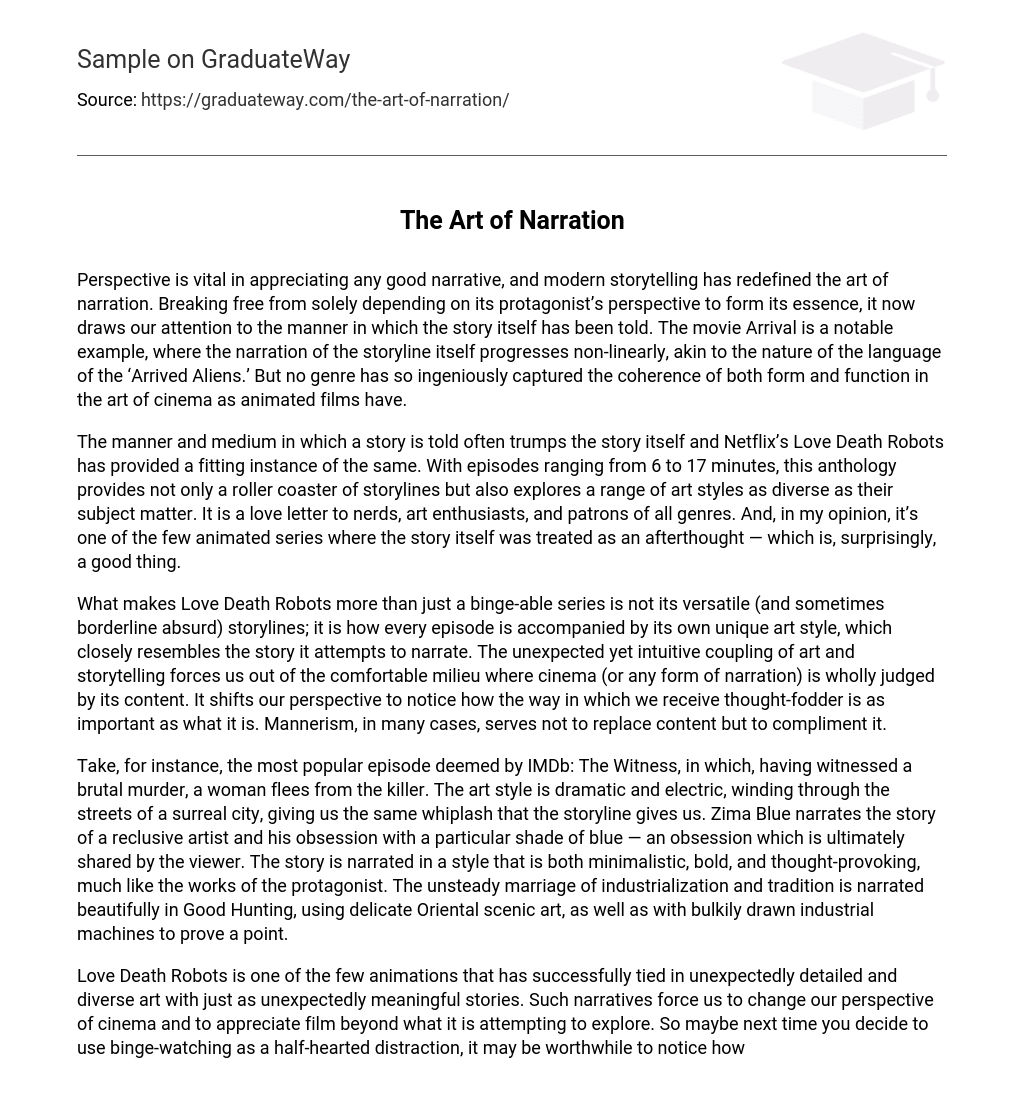Perspective is vital in appreciating any good narrative, and modern storytelling has redefined the art of narration. Breaking free from solely depending on its protagonist’s perspective to form its essence, it now draws our attention to the manner in which the story itself has been told. The movie Arrival is a notable example, where the narration of the storyline itself progresses non-linearly, akin to the nature of the language of the ‘Arrived Aliens.’ But no genre has so ingeniously captured the coherence of both form and function in the art of cinema as animated films have.
The manner and medium in which a story is told often trumps the story itself and Netflix’s Love Death Robots has provided a fitting instance of the same. With episodes ranging from 6 to 17 minutes, this anthology provides not only a roller coaster of storylines but also explores a range of art styles as diverse as their subject matter. It is a love letter to nerds, art enthusiasts, and patrons of all genres. And, in my opinion, it’s one of the few animated series where the story itself was treated as an afterthought — which is, surprisingly, a good thing.
What makes Love Death Robots more than just a binge-able series is not its versatile (and sometimes borderline absurd) storylines; it is how every episode is accompanied by its own unique art style, which closely resembles the story it attempts to narrate. The unexpected yet intuitive coupling of art and storytelling forces us out of the comfortable milieu where cinema (or any form of narration) is wholly judged by its content. It shifts our perspective to notice how the way in which we receive thought-fodder is as important as what it is. Mannerism, in many cases, serves not to replace content but to compliment it.
Take, for instance, the most popular episode deemed by IMDb: The Witness, in which, having witnessed a brutal murder, a woman flees from the killer. The art style is dramatic and electric, winding through the streets of a surreal city, giving us the same whiplash that the storyline gives us. Zima Blue narrates the story of a reclusive artist and his obsession with a particular shade of blue — an obsession which is ultimately shared by the viewer. The story is narrated in a style that is both minimalistic, bold, and thought-provoking, much like the works of the protagonist. The unsteady marriage of industrialization and tradition is narrated beautifully in Good Hunting, using delicate Oriental scenic art, as well as with bulkily drawn industrial machines to prove a point.
Love Death Robots is one of the few animations that has successfully tied in unexpectedly detailed and diverse art with just as unexpectedly meaningful stories. Such narratives force us to change our perspective of cinema and to appreciate film beyond what it is attempting to explore. So maybe next time you decide to use binge-watching as a half-hearted distraction, it may be worthwhile to notice how the marriage of impressive ideas and visuals serve as a refreshing reminder of how sometimes cinema is, quite literally, art.





